Crassula ovata Gollum: Signs of under-watering?
Good morning to all! This is my first follow-up post since re-potting this Gollum plant back in mid April. This morning I noticed several clusters of leaves are showing this white scale. It doesn't appear to be a growth on the leaves, rather just looks like a dry patch. I'm curious if this is a result of my watering habits. Admittedly I have been paranoid of over-watering since I've been caring for this plant. I've only watered it once per week since mid April and I don't think I have been watering deeply enough at that. The plant has been outside full-time since re-potting and gets lots of direct light - maybe as much as 3/4 the day.
Any ideas on the image below are much appreciated!
PS: For what its worth the plant is showing signs of new growth.
Thanks!
Kevin
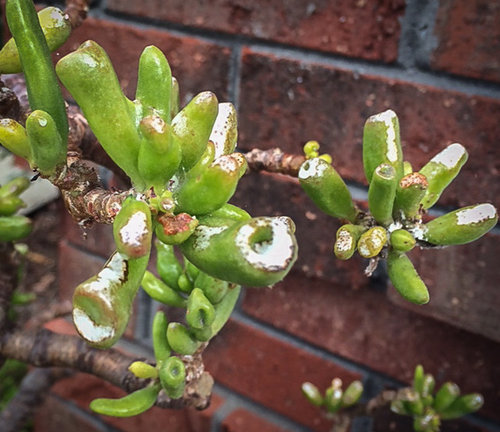
Comments (31)
- 8 years ago
My first guess would be very hard water, too much fertilizer, or not enough flushing when you water. If you have hard water, consider getting a PH test kit and using vinegar to lower the PH of the water to a range of about 6-7. Use fertilizer at half strength or lower and water throughly to flush out the build up of salts.
Rob0 Related Professionals
Comstock Park Landscape Architects & Landscape Designers · Redondo Beach Landscape Architects & Landscape Designers · McKinney Landscape Contractors · College Park Landscape Contractors · Elkridge Landscape Contractors · Franklin Landscape Contractors · Hickory Hills Landscape Contractors · Milford Mill Landscape Contractors · Mission Landscape Contractors · New Cassel Landscape Contractors · Rosemount Landscape Contractors · Jefferson Valley-Yorktown General Contractors · Maple Heights General Contractors · Watertown General Contractors · New Lenox Decks, Patios & Outdoor Enclosures- 8 years ago
Rob, it's not especially common...usually damaged leaves fall off. When the leaf survives, however, the white scar persists. I just went out back and took a couple pics to share. I knew there were older white burned leaves on a regular Jade....but I also found a touch on one of my 'Gollum' Jades, too.
Josh
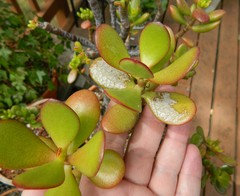
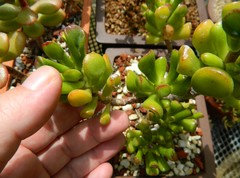
- 8 years ago
The last time I sunburned a Jade, the spots on the leaves turned black. Learn something new every day!
0 - 8 years ago
I too believe it is caused by sun - here is last years photo of sedum morganianum, with same white spots, on otherwise healthy plant.
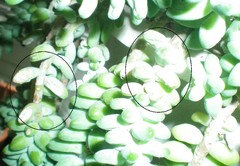
Rina
Kevin Childress (zone 7b)
Original Author8 years agoRob, Andy, Josh, Rina, and Chistopher,
Thank you all for the follow-up! Perhaps I'll move the plant to a spot with slightly less exposure.
Regards,Kevin
- 8 years ago
I agree, sun scald.
I've had these marks appear on my Gollum & I'm assuming it's a light sun scald as opposed to the darker brown lesions, which seem to be a more accute case.
0 - 8 years ago
I very much doubt it's sunburn. They are probably mealy bug nests. Do you have tiny black flies? Those are the males. The nests are easily removed with rubbing alcohol-use a q-tip. Then just keep an eye on them. With plants coming in from all over the world these day the bugs come along for the ride. There are infestations everywhere!
0 - 8 years ago
Kevin, This is what it will look like when dehydrated.
I'm going with Sunburnt on this one.. Most-All succulents need some induction period before receiving full sun for more than a couple of hours. I'm sorry but those sun-burnt scars are permanent, and you have to wait for newer leaves.
Pwelch has a point too, mealy are very common in succulents. But they tend to be fuzzy white stuff if its a nest, and you will definitely spot them (if you give closer inspections) crawling when they are actively feeding on your plant.
Bernard
0 - 8 years agolast modified: 8 years ago
That doesn't look like mealy to me...the mealies I've had on my gollum seemed to like tender new growth so they tended to cluster at the base of leaves, not the tips. I have yet to experience sunburn on my jades (knock on wood) but I personally trust the collective years of experience of those commenting above c:
Kevin Childress (zone 7b)
Original Author8 years agoThanks again to everyone for sharing your thoughts.
I did have a problem with mealy bugs when I first got my hands on this plant back in April. I've sprayed the entire plant twice in my garage with 50/50 water/rubbing alcohol mix and I feel pretty sure I've got the mealy bugs under control.
This "burned" spot on the leaves does appear to be just that; burned. I scraped at a spot just a little and its definitely baked into the skin of the leaves. I've shared a better image below of what I see.
Bernard, you mentioned an induction period regarding full sun light, and I did not do that. The plant had sat in a greenhouse for 8 years before I acquired it, and never received direct light during that whole time. After reading about the plant (which I knew nothing about prior), and after having re-potted it, I put it outside thinking direct/full sun would be good for it. Its been sitting in direct (and very hot) sunlight nearly all day. Perhaps I pushed it a little too hard too fast.
I've moved the plant to a place where it will still receive full sun - about 4 hours worth I think - which will be mostly early morning to pre-noon light.
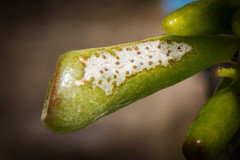 0
0- 8 years ago
Kevin, my jades loves part shade, but they tolerate full sun. Ideally, you want to acclimatize it for a few weeks, from a hour full sun to a couple. For the time being, it's best to give it some break from the sun.
Other than that, it's a really robust plant and it will do pretty well.
Keep us updated soon!
- Bernard
0 - 8 years ago
pwelch
While I agree about mealy bugs in general, I can tell you that plant I posted photo of (sedum miorganianum) definitely, 100% doesn't have any bugs.
The photo is from last summer. I still have it. It summers outside in sunny spot, winters indoors with help of artificial lights (dark, cold and long Canadian winters...) The leaves I took photo of were all on one side, most exposed to sun. There were few more, but I didn't think of taking more photos.
Burned leaves feel almost papery where the spots are.
Rina0 - 8 years ago
Only because Kevin posted HIS question so recently, I wonder if you knowledgeable folk could comment on whether my Gollum is also showing evidence of sunburn.
I put it out in May and it was clearly stressed to due the heat and sun intensity. I brought it in after a week or two. It's still losing leaves and this is what they look like. Is it sun damage (still) or maybe I am overwatering? It's been in my sunny room since May, out of direct sunlight.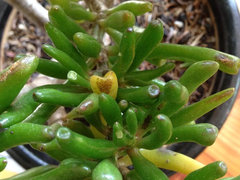 THANK YOU!!!!
THANK YOU!!!!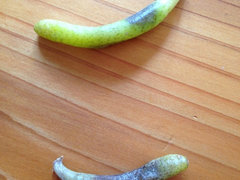 0
0 - 8 years agolast modified: 8 years ago
zig
My first reaction to your photo is overwatering.
Yellowing and blackenig leaves are usually sign of too much moisture - possibly, your potting mix is not draining well, so plant sits in moist soil. It may feel dry to touch, but how wet is it inside, about 2" or so in and all the way to roots, is more important.They do well in sunny location - unless you put it directly into full sun after being indoors for months. They should be acclimatized over period of time depending how strong the sun is - putting them into shady spot first, and moving into little more sun every 2-3 days or so.How hot is it where you are located?
here is photo of one of my plants, in full sun:What kind of soil/mix is your plant potted in?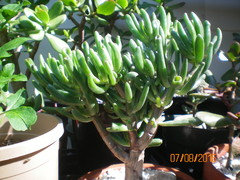
Rina - 8 years ago
I live in Victoria BC (zone 9B) and my deck -- where the plant was put -- gets direct hot sun and is supremely hot (close to 100F) with no wind. I didn't think it would be so intense so early in the season. It's a peculiarity of my deck which is on the south side of a hill with a wind buffer that makes afternoons shockingly hot (a micro-microclimate!)!
When I lived in Vancouver this same plant could handle the sun and even summer rains with no problem, but it was a little more shady and definitely not as hot.
My biggest mistake was putting it out on the deck with no gentle acclimatization. Anyway, it's back inside sheltered from any direct sunlight now.
The soil is very dry and has served this plant for 5 years. I did thoroughly water it after the sun scalding. Twice. I'm a little shocked by the leaves yellowing and falling off. It's not done this before and I'd like to do what is necessary to stop it! I'd say it's maybe 6 or 7% of the leaves - not anything extreme like 30% -- undergoing this black spotting, yellowing and falling off.0 - 8 years ago
zig
That is hot (I definitely don't get anything near that here!), and plants appreciate the air circulation too.
Would you consider repotting? If it was my plant, that's what I would do. After 5years, it could use fresh soil?
Here is photo of the same plant when really thirsty: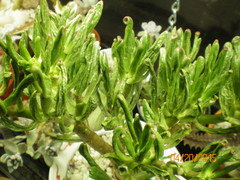
That is in April this year, photo in previous post is the same plant (just different angle), taken today. It has been raining here a lot this year, but it is potted in very gritty mix, so I don't worry about drainage.
Rina0 - 8 years ago
Oh my! That was one thirsty plant!
I read recently a good soil for succulents is:
5 parts perlite
4 parts bagged potting soil
1 part coast sand
pinch of rock dust
Is that what you use? Also, do you let your plant dry out before transplanting? I seem to remember reading something like that about succulents...?0 - 8 years agolast modified: 8 years ago
I use mix of turface+perlite+chicken grit for just about all of my succulents. I tried to add some bark, but have hard time to find it so I don't bother anymore. I have plants in mix of perlite and turface only, also in mix of chicken grit and perlite only and even in mix of chicken grit and turface only. Very few have just a little potting soil or coir in the mix - maybe 10-15%.
I don't use sand at all, and don't know what is coast sand - are the particles relatively large? If yes, I would consider using it. If I was sifting it using kitchen sieve (which I use to get rid of smallest particles and dust); I would use what remains inside the sieve.
I let to dry out rooted plants if they have wet roots - lets say I washed off soil from just purchased plant. I don't think it is necessary to let dry the healthy roots.
But I do let dry/callus freshly cut cuttings.
These kind of chunky mixes with inorganic ingredients require watering more often - so far I didn't have to since we had lots of rain, rather often. In very hot climates, some add soil to increase water retention of the mix. I don't have that experience...
I under-watered that jade because it was quite hidden between many plants and I probably thought that it got enough water when it didn't. In winter, I water less often because I have plants in room at only about 10C - in cold conditions any potting mix takes longer to dry...and I believe that cold and wet isn't that good for succulents.
Rinaps: that jade war really dry, I worried it may not make it. The roots were pretty dry too, I actually let it sit in water overnight. But it is doing great. Confirms that succulents can take dryness better than wetness...
0 - 8 years ago
Meant to write "coarse" sand (not coast).
Great idea about using the sieve.
Thanks for sharing all your advice and experience. I wonder if turface is available at our garden centers. I've never noticed it before if it is. Same for chicken grit. But I've watched videos that recommend it for other gardening uses too. I'll try to repot this one soon. Thanks again.0 - 8 years agolast modified: 8 years ago
zig
I doubt you get them at garden centers and if yes, it would be likely overpriced. I get chicken grit from farm supply store (approx. $10/50lb bag). You may be able to find some small granite grit/chips (?) in garden centers in bulk?Turface (used extensively at golf courses and play fields) - I get it from distributor, about $20/50lb.
I believe you could get turface bagged in small bags, sold often to bonsai enthusiasts (even in garden centers and also in pet stores-for lizards & reptile substrate) and often under very different names, but small packages make it pricey. But if you need only small amount, it would be OK price-wise.
You could check CanTire for oil absorb - but you need to read ingredients; same goes for kitty litter that some ppl use - if made of calcined clay otherwise turns to mud - I don't have experience with these but you could find more info if you search the forum.
- 8 years agolast modified: 8 years ago
I just noticed photo you posted above - that is one very nice plant!
In that photo it doesn't look like it's having any problems. Every plant looses few leaves here and there. But the close-up showing the blackish spots should be watched, I think - as already suggested.
The small brownish spots are probably leftovers of sun burn.
Really nice plant.I wonder how are Kevin's plants doing - didn't see update on his other thread either.
Rina - 8 years ago
I keep hearing "you have to water more with gritty mix" but I don't think that's an accurate statement. Or at the very least, it needs to be qualified. If you're using Turface (or equivalent) it's actually retaining quite a bit of water. On top of that you can tailor the mix to retain more or less water depending on what you need. I've noticed that for my plants that have gotten established in 1:1:1 gritty mix, I don't water them any more often than I was in 50/50 perlite/potting mix.
Kevin Childress (zone 7b)
Original Author8 years agoGreetings, all!
Rina had asked earlier if I had an update on my grand 'ole Gollum, and indeed I do. In short, my plant is thriving! I base that on two primary observations: 1) In recent weeks the plant has produced an abundance of new growth. Almost all of the primary preexisting leaf clusters are filling out with new leaves and, what seems more importantly to me, new leaf clusters are forming in multiple areas all around the plant. 2) When I got the plant it was rather weak. What I mean is I could hardly move the plant from point A to point B without the plant dropping dozens of leaves - it was quite intolerant to any physical contact at all - but that condition has definitely changed. I've accidentally bumped into the plant when moving things around my patio, and my German Shepard's long and powerful wagging tail has complete disregard for the plant overall. :) In any case, now that the plant has stabilized to its' new environs, it has become much stronger and has stopped dropping leaves due to contact.
As for my primary problem when starting this thread, I definitely have the sunburn issue under control. The whole sunburn issue was my own problem in that I had misinterpreted how much direct sunlight the plant might receive in a day. Previously the plant was receiving day-long direct (and very hot) sunlight. The sunburn ceased immediately when I relocated the plant to my back patio. At least during this time of year, the plant now only receives about 4 hours of direct light from ~11:30 a.m. to ~3:30 p.m. As Josh had mentioned earlier, the sunburned leaves still show the problem but I have complete confidence that in time those burned leaves will be replaced with excellent new growth!
One last comment about my watering habits: Until the time of this thread, I believe that I had been under-watering the plant in a rather bad way. Being this is my first experience with a Jade, I had become a bit paranoid that I would over-water the plant. I was allowing the soil to dry completely between watering and I was only watering the plant enough to saturate the top ~3 inches of soil. Today I water the plant entirely meaning that I water it deeply, literally until water seeps from the pot's drain hole. And I'm still letting the soil dry almost entirely (as best as I can tell) between watering.
Its taken a bit of trial and error with this plant but this community has certainly helped me get on track with ensuring it a long(er) and healthy life!
- 8 years ago
Kevin
Great to hear that your plant has recovered, and even more so that you have excellent understanding what were the problems.
If the potting mix is gritty and mostly inorganic, overwatering is much less of an issue.
Maybe you'll post a photo of your thriving plant one day...Rina0 - 8 years ago
Hey Kevin, I had lost track of this thread- thanks for the update and glad your plant is growing well!
ez
0









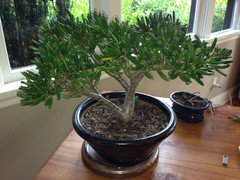
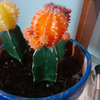
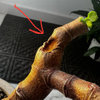

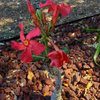
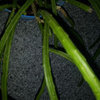
David Glyn